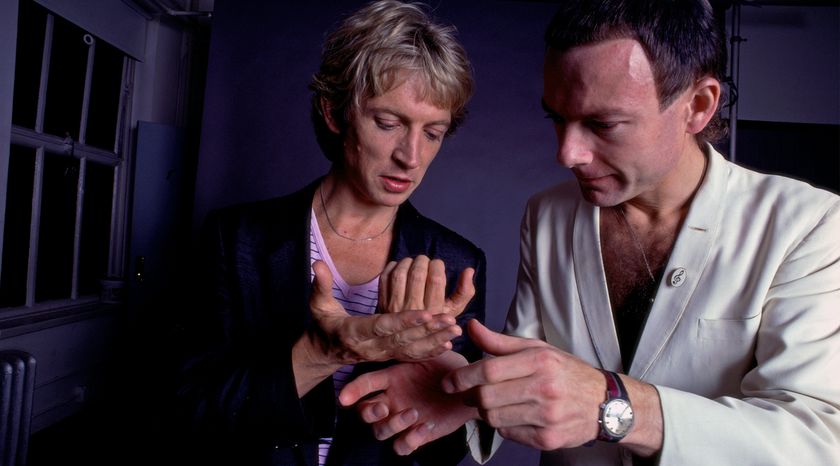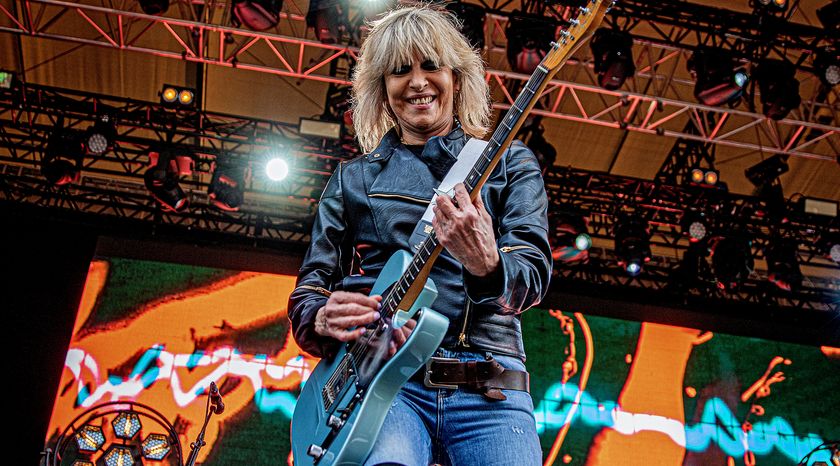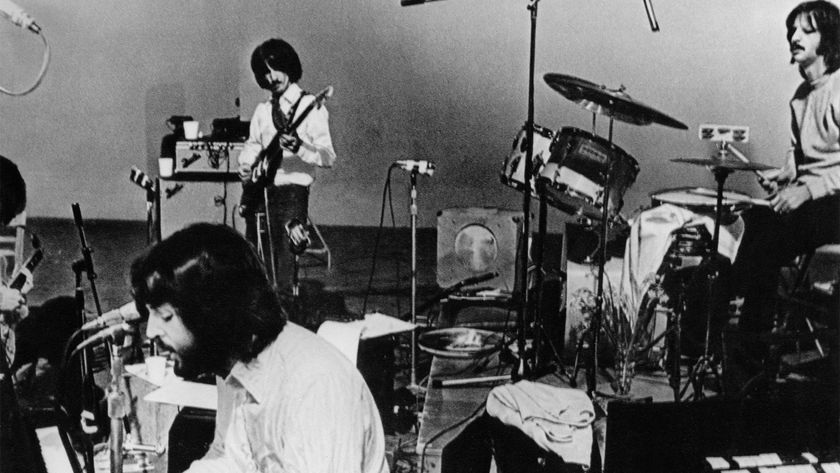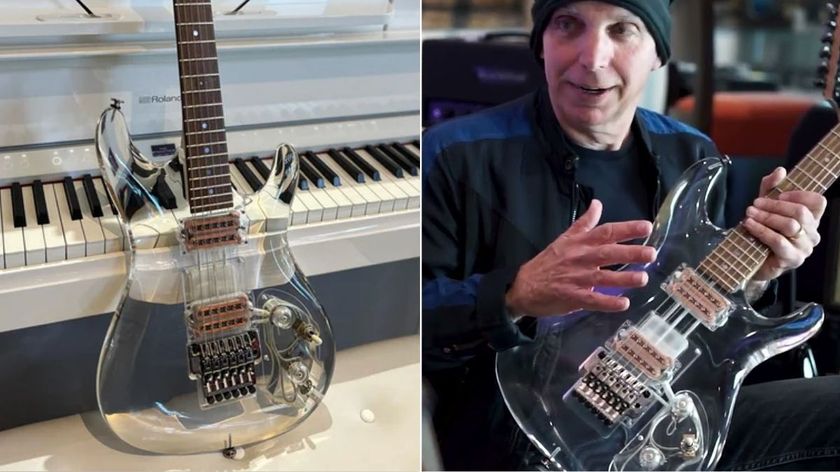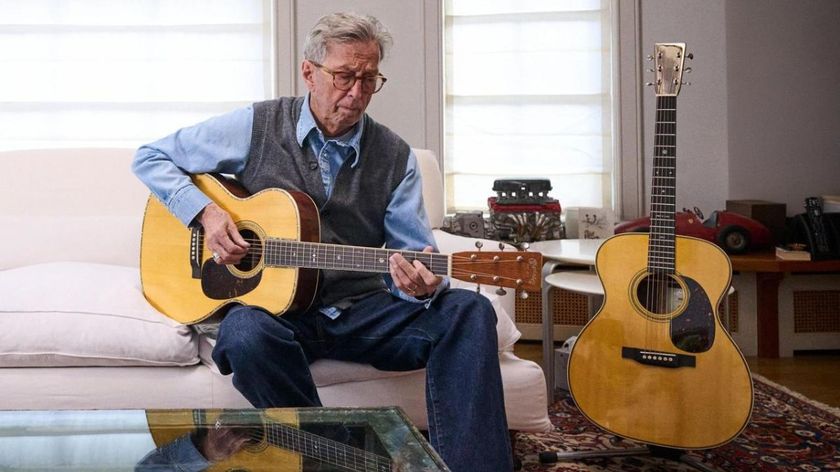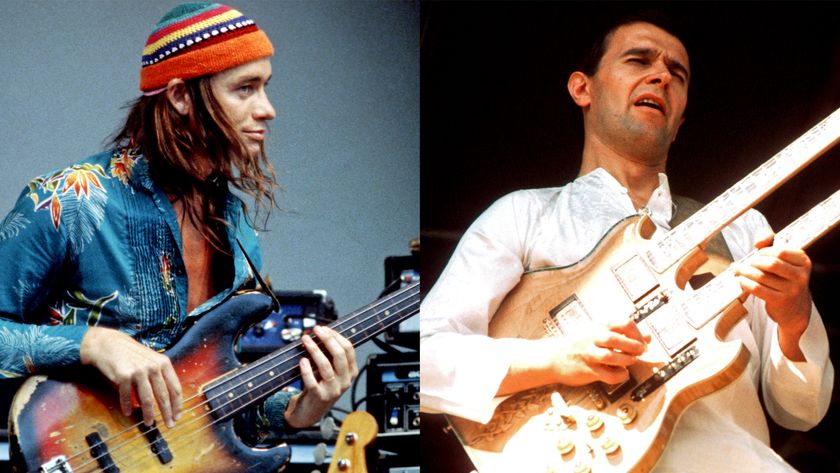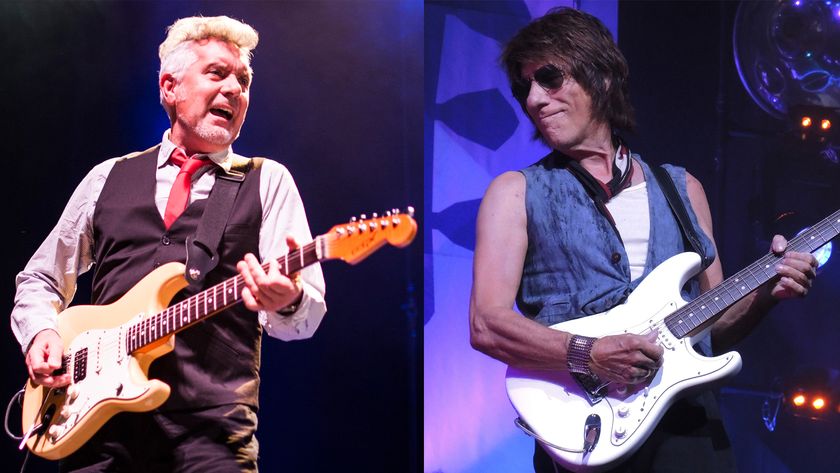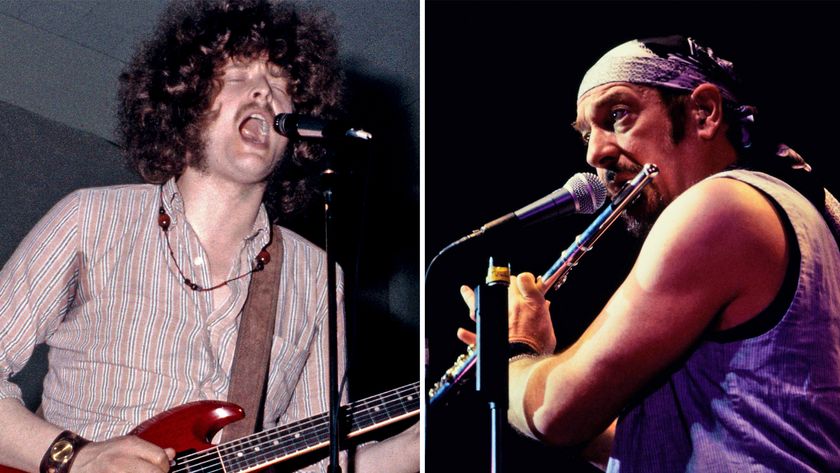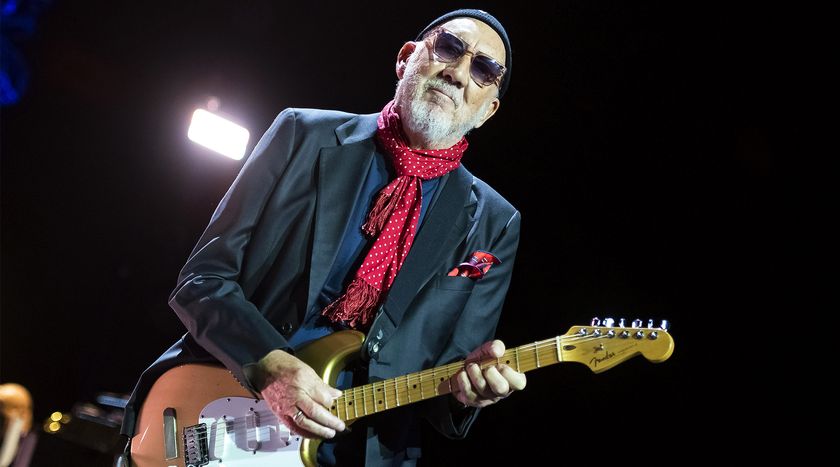“I’m Not Looking to Overplay to Boost My Ego; I Want Innocence and Discovery”: Scott Holiday Reveals the Surprising Inspirations and Killer Guitar Gear Behind Rival Sons’ Latest Album, ‘Darkfighter’
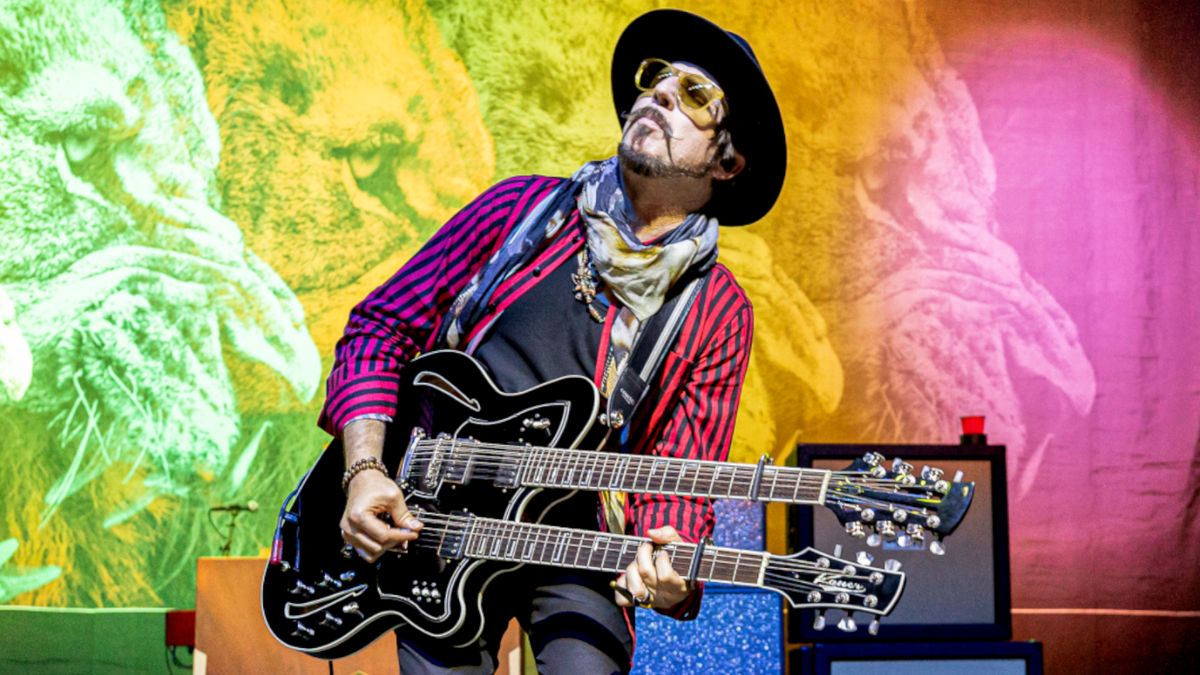
Scott Holiday calls from his car while driving to a rehearsal with his band, Rival Sons. It’s a long haul from his home in Huntington Beach to Hollywood, but he doesn’t mind. “California’s had a lot of rain recently,” he says. “But right now the sky has opened up and it’s beautiful out. I love it.”
The guitarist is excited to play some of the new songs from the band’s latest album, Darkfighter (Atlantic) in preparation for what could be a year’s worth of road work. “We tracked all of the songs in the studio, but now we’re going to play them straight through as a band for the first time,” he says. “They take on a whole new identity when you’re not in recording mode, and when you play them for an audience they become a whole different animal.”
It’s been four years since the hard-charging classic rock enthusiasts released new music, but Holiday and his mates – singer Jay Buchanan, bassist Dave Beste and drummer Michael Miley – are rewarding their fans’ patience with not one, but two albums: Darkfighter (produced, as always, by the band’s studio main man, Dave Cobb) will be followed later this year with an already recorded companion disc, Lightbringer.
“The first album is part of the story, and the second one, while a bit different, is the continuation,” Holiday explains. “We wanted people to easily digest the new songs, so it made sense to split them up on separate albums. If you have an hour of music on a record, it causes fatigue for the listener.”
Darkfighter’s eight crushing tunes could hardly be a cause for weariness. Looking for a surrealistic, Zep-flavored mini-epic? There’s “Rapture.” “Nobody Wants to Die” is a go-for-the-throat (or grab-you-you-by-the-balls) house rocker, and for whacked-out stoner rock, “Bird in the Hand” gets it done. Holiday rips and snorts throughout – he doesn’t so much play a riff as blast it like buckshot. And his assortment of delirious, mega-fuzz solos are perfectly placed songs-within-songs.
“While I was coming up with my guitar parts, I didn’t really listen to the same old rock stuff that I usually do,” he says. “I got into a bunch of jazz, like Coltrane and Monk. I know people will say, ‘Rival Sons isn’t very jazzy,’ but I used those records as a palate cleanser to aid my writing. I’d rather listen to a horn or a drum or a voice to determine what I want to do. We kind of know all the moves we want to make on the guitar, so I tried to take it somewhere else.”
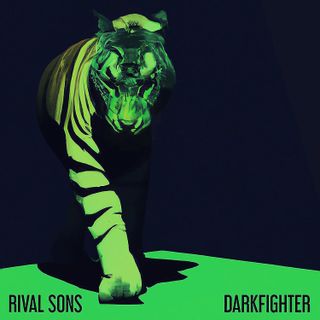
In the past, you’ve said that the band would show up in the studio and write on the spot. Was this album done the same way?
Get The Pick Newsletter
All the latest guitar news, interviews, lessons, reviews, deals and more, direct to your inbox!
No, this one was more written at home. Jay and I would pass ideas back and forth. That said, we did leave room to cut some stuff off the floor. We didn’t work too much with the other guys until we got to the studio. We wanted to capture everything in the moment.
The first few songs on Darkfighter are pretty direct arrangement-wise, but as the album progresses it gets more progressive and elaborate. The last two tunes are over six minutes each.
That was the idea. It’s been a while since people heard new music from us, so I wanted to start the album with things that were slightly familiar. After an organ intro, you hear the riff to “Mirrors” and go, Okay, I’m listening to Rival Sons. That was the first riff I wrote for the record. When I came up with it, I was like, All right, we’re writing a record!
“Mirrors” has such brutal guitar distortion. It sounds like your amp is breaking apart.
[laughs] Yeah! I worked with a guy from Denmark at a company called KossekFX, and he came up with this super-weird octave fuzz. I recorded with it at home through a Supro amp. It’s a cool sound.
Other tracks, like “Bird in the Hand” and “Rapture,” have incredible overdriven tones. Are you using that same effect?
I tried to use different effects throughout. There was an octave effect we call the Deep Sea Kraken, and I really got into the Keeley Synth-1 pedal. It’s not really a fuzz; it’s a synth. I’m just attacking it, and I have it set in a way that makes it sound more like a fuzz. I love it.
The guys at Isle of Tone make some exquisite vintage-style fuzzes. They made me one that’s like a Mk 1.5 Tone Bender meets a Fuzz Face. It’s special.
Your solo on the song “Rapture” is pretty strange, but in a good way. Is something like that composed at all?
It’s reasonably spontaneous. It’s a weird solo in that it’s textural. There’s not a lot of burning hot licks all over it. It’s fun guitar playing, for sure, but it’s me trying to connect lines and create a mood.
It’s fun guitar playing, for sure, but it’s me trying to connect lines and create a mood
Scott Holiday
What were the main guitars you used?
There were some new things. I used a really cool Gretsch Falcon. It’s in the car next to me right now. I built it with Stephen Stern at the Custom Shop, and it’s awesome. It’s got TV Jones Super’Trons in it. It’s already seen a lot of playing.
I’ve also been working with Matt Hughes at Banker Custom. He’s made me some really amazing instruments. He built me a korina Flying V, but I wanted to do the Lonnie Mack thing with the long crossbar for the Bigsby, so it’s a Flying A. [laughs] He also built a V Bird – it’s like a Firebird and a Flying V mashed up. I use that one a lot.
I also used a baritone on this record – a Kauer Banshee baritone. That was something different, although we’ve dabbled a little bit.
I started writing with an old Danelectro baritone, and I loved how it sounded. I also used a Gretsch Duane Eddy, and I recently got a ’66 ES-330. That guitar is like “the Beatles in a box.” Those were the main players. I got a lot of cool sounds going with them.
Dave Cobb has produced all of your albums. How involved does he get in the songwriting and arrangements?
It depends. Sometimes he says, “What do you have?” We’ll play him a song and then he’ll hit the buttons. [laughs] A lot of times, we’ll track parts and he’ll tell us what’s missing. He’ll pick up a guitar and say, “It needs a pre-chorus.” We’re pretty hard on ourselves. He’ll tell us to shit-can parts. Sometimes we will and sometimes we won’t. He’s more of another band member than an authority figure.
Because you and Dave know each other so well, does he find new ways to push you creatively?
It couldn’t be easier or more fun getting tones. I bring my live rig in, along with the stuff I use to write with at home. Dave’s got the best stuff in the studio – it’s just unreal. We know what works and what sounds good. I’ll get a sound for one part, and Dave will go, “Go grab my ’54 Esquire. It’ll make a great contrast.”
As far as playing, I don’t feel like he has to push me. I’ll try to get in a zone in the studio, but instead of being confident and in control, I’ll be super-vunerable. I’m not looking to overplay to boost my ego; I want innocence and discovery, and that gets harder to find the longer you do this.
Order Rival Sons’ Darkfighter here.
Visit the Rival Sons website for tour info, merch, updates and more.
Joe is a freelance journalist who has, over the past few decades, interviewed hundreds of guitarists for Guitar World, Guitar Player, MusicRadar and Classic Rock. He is also a former editor of Guitar World, contributing writer for Guitar Aficionado and VP of A&R for Island Records. He’s an enthusiastic guitarist, but he’s nowhere near the likes of the people he interviews. Surprisingly, his skills are more suited to the drums. If you need a drummer for your Beatles tribute band, look him up.
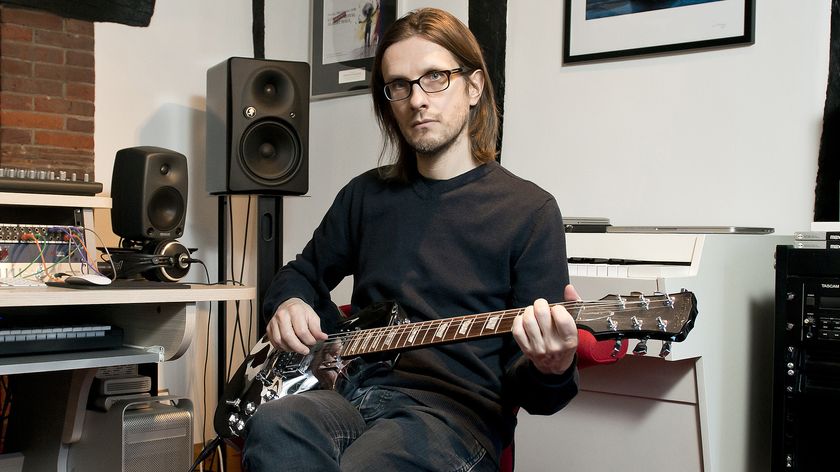
"Old-school guitar players can play beautiful solos. But sometimes they’re not so innovative with the actual sound.” Steven Wilson redefines the modern guitar solo on 'The Overview' by putting tone first
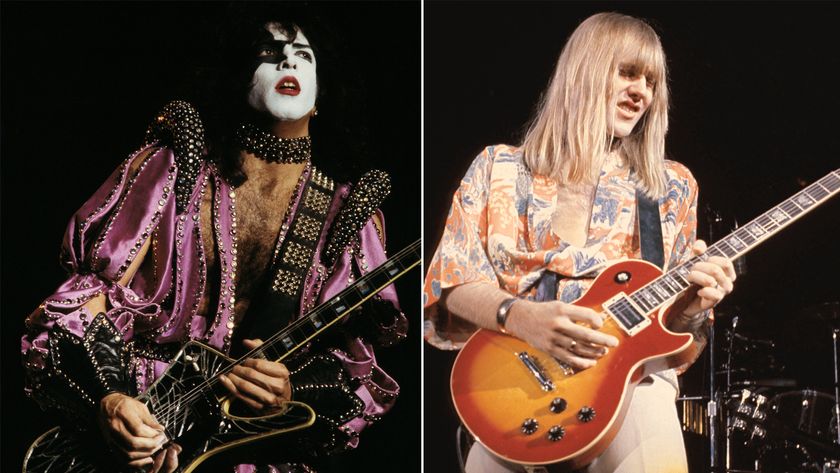
“I played it for Paul Stanley when we were touring with Kiss. He had a look on his face, like 'What the hell is this!?’” Alex Lifeson tells how Rush’s early failure pushed them for their breakthrough success, 2112
